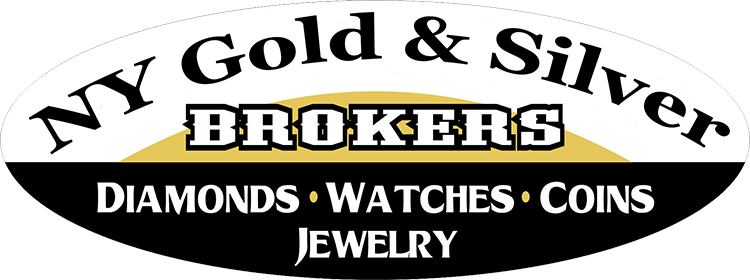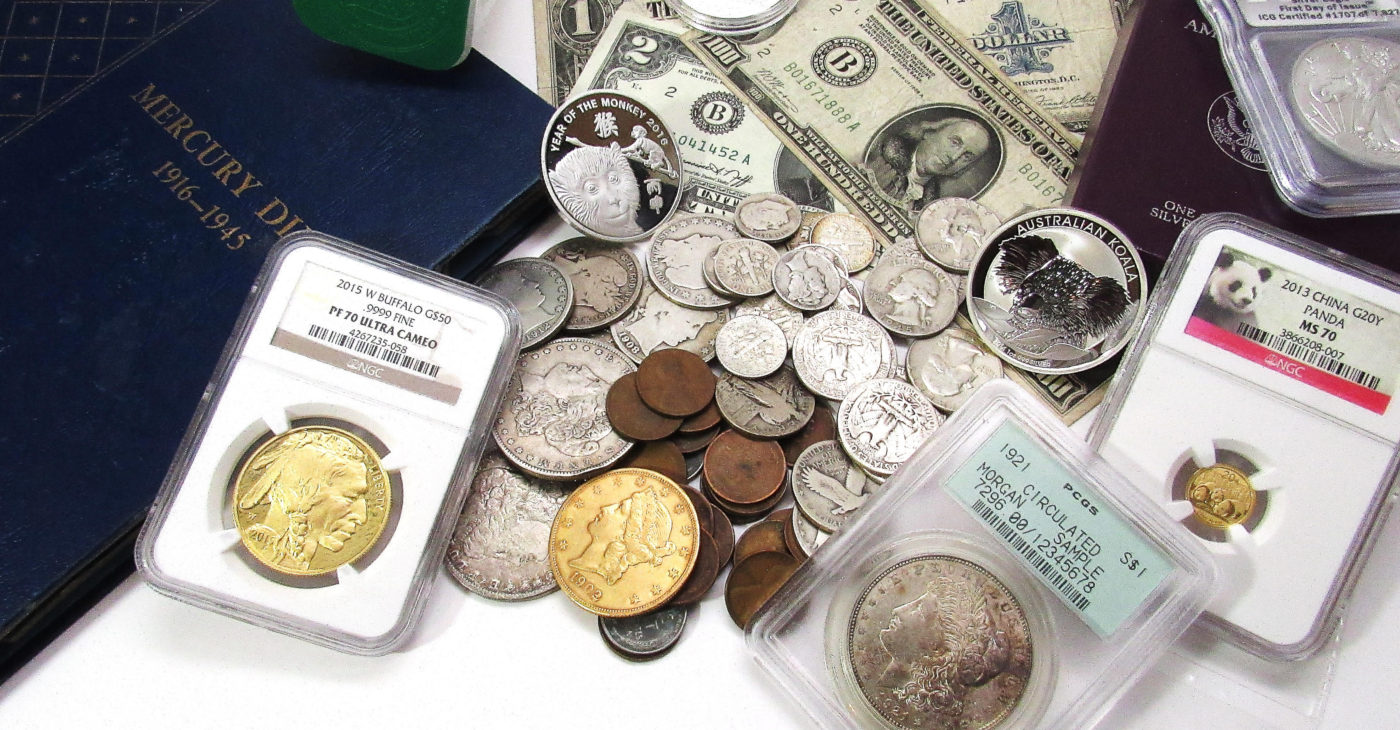Franklin Half Dollars
(1948-1963)
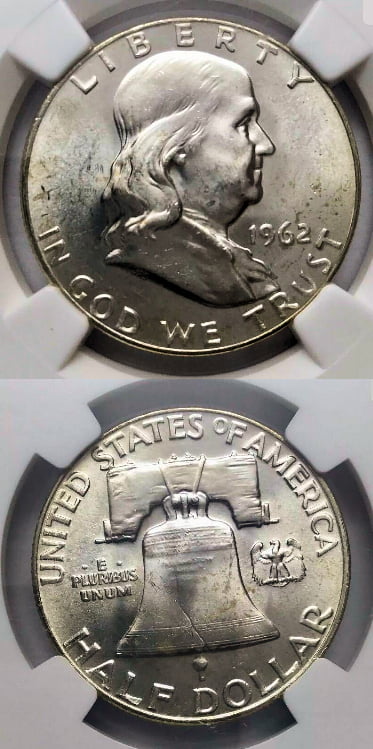
The mint mark for this 90% half dollar is located on the reverse of the coin, just above the top of the Liberty Bell. In average circulated condition these 90% half dollars are only worth melt value. You would have to have a high-grade mint state or proof Ben Franklin coin for it to be worth more than melt value.
Kennedy half dollars
(1964-present)
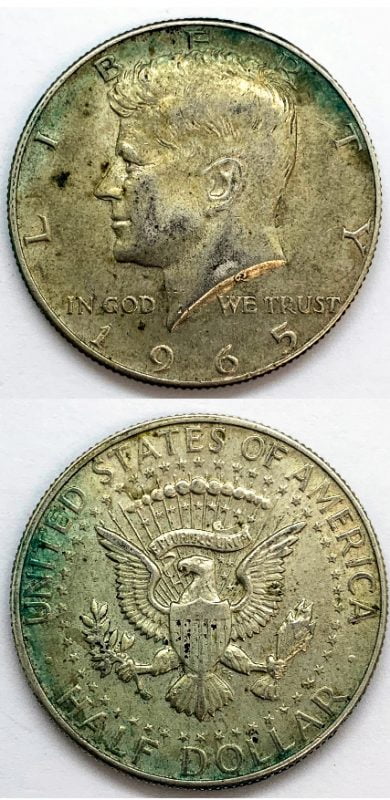
Kennedy half dollars can be 90% silver if they date from 1964 OR 40% silver if they are from 1965-1970. Many people have collected Kennedy half dollars over the years, including Kennedy half dollars that come in proof and mint sets.
(Proof and Mint sets will be discussed in detail in a later blog.)
Walking Liberty Half Dollars (1916-1947)
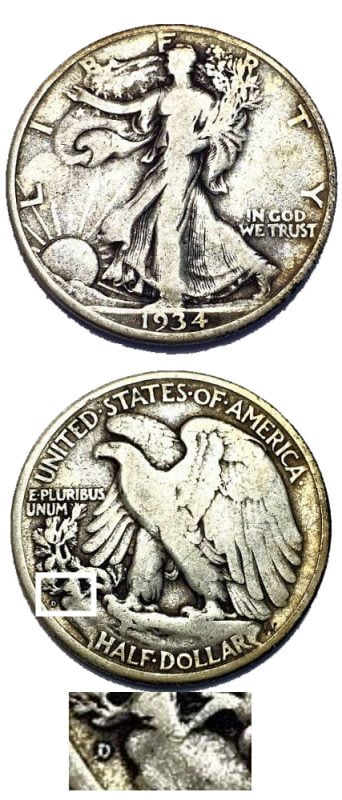
The mint mark for this 90% half dollar was moved after it was originally placed on the obverse (front of the coin).
In 1917 the mint mark was ordered to be moved to the reverse, a short distance from the left of the “H” in “HALF DOLLAR” around the 7 o’clock position. Key dates to look out for are 1916-S, 1921, 1921-D, 1921-S, and 1938-D.
Barber Half Dollars (1892-1915)
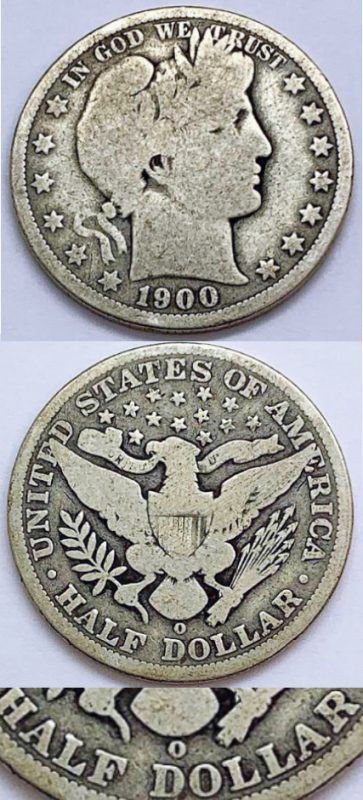
The mint mark for this 90% half dollar is located on the reverse of the coin, just below the eagle’s tail feathers and above the letter “D” in “DOLLAR”. The key dates are as follows: 1892-O, 1892-S, 1893-S, 1896-S, 1897-O, 1897-S, 1913, 1914, and 1915.
Older half dollars that are less common include the Liberty Seated half dollars from 1839-1891 and the Capped Bust Half dollar from 1807-1839.
Liberty Seated (1839-1891)
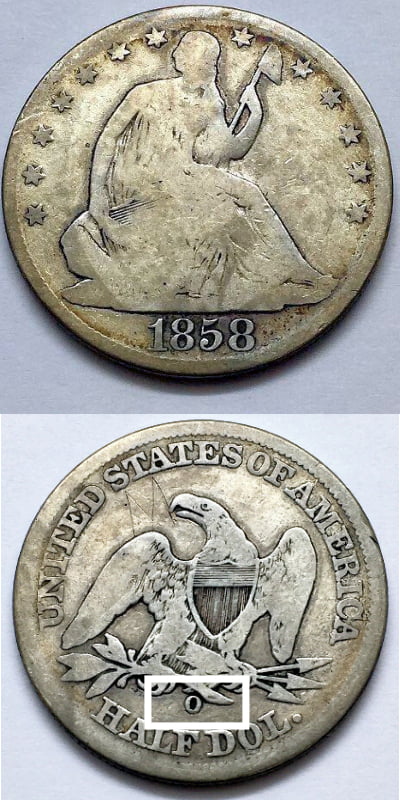
Several varieties exist for the Liberty Seated halves because of the design changes in drapery, arrows, motto, and rays. Although there are many common dates still widely available in the lower grades, it is very difficult finding much higher grade coins in the series.
In much higher grades, these coins become very rare and fetch tens of thousands of dollars. Key dates known to be worth hundreds of thousands of dollars in the higher grades include the 1839-No Drapery, the 1850 – No Motto, the 1866-S – No Motto, or the 1870-CC.
The varying types of Liberty Seated Halves are as follows:
Type 1, No Drapery (1839)
Type 2, No Motto, (1839-1866)
Type 3, Arrows and Rays (1853)
Type 4, No Motto, Arrows at Date (1854-1855)
Type 5, With Motto (1866-1891)
Type 6, With Motto, Arrows at Date (1873-1874)
As with many coins, their value depends on several factors, including key and semi-key dates. For the Liberty Seated Halves, almost every coin is of significant value at higher grades. Here are some key and semi-key dates to look out for even at lower grades:
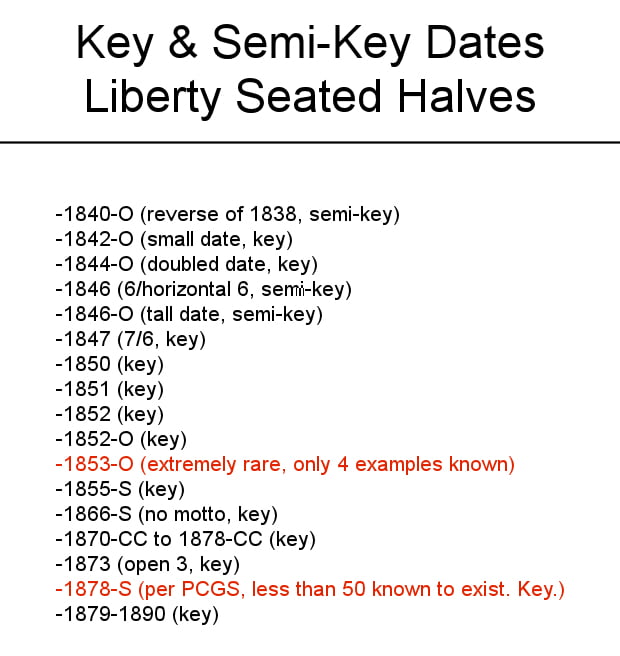
Capped Bust Half Dollar
(1807-1839)
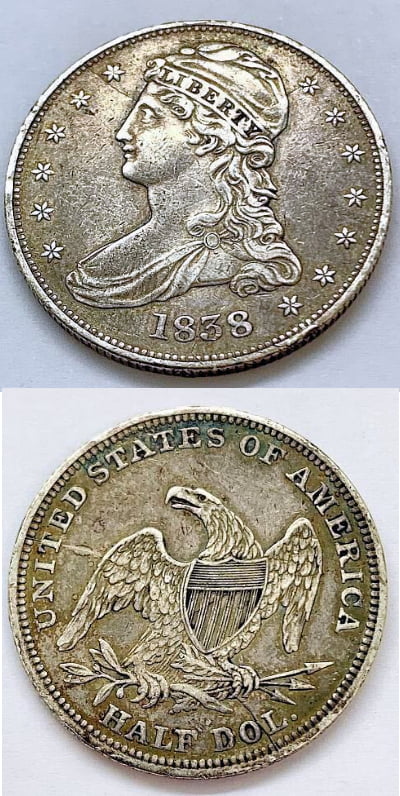
The Capped Bust Half Dollar first appeared in 1807 and it is important to note that these coins come in three different types. Type 1, Lettered Edge from 1807-1836, Type 2, Reeded Edge, “50 CENTS” on Reverse from 1836-1837, and Type 3, Reeded Edge, “HALF DOL.” on Reverse from 1838-1839. Many collectors refer to these coins as the “Bust Halves”.
As is to be expected from most coins from the early 19th century, finding high grade uncirculated coins are rare, which makes them worth tens of thousands of dollars. In some cases certain dates, types, or mint marks can be worth hundreds of thousands of dollars in the higher grades. Mintage for this series was relatively high with numbers in the millions. They stopped producing the U.S. silver dollar in 1804 and did not begin again until 1840 making the half dollar the denomination of choice for many depositors of silver.
Another interesting fact about this series is there is a myriad of varieties and sub varieties that exist within the 3 different types that is unlike any other series. Besides the many expensive higher grade coins in this series some key and semi key dates to look out for in the lower grades are as follows. This list features coins valued at or above $100 for G-4 condition from PCGS at time of this publication:
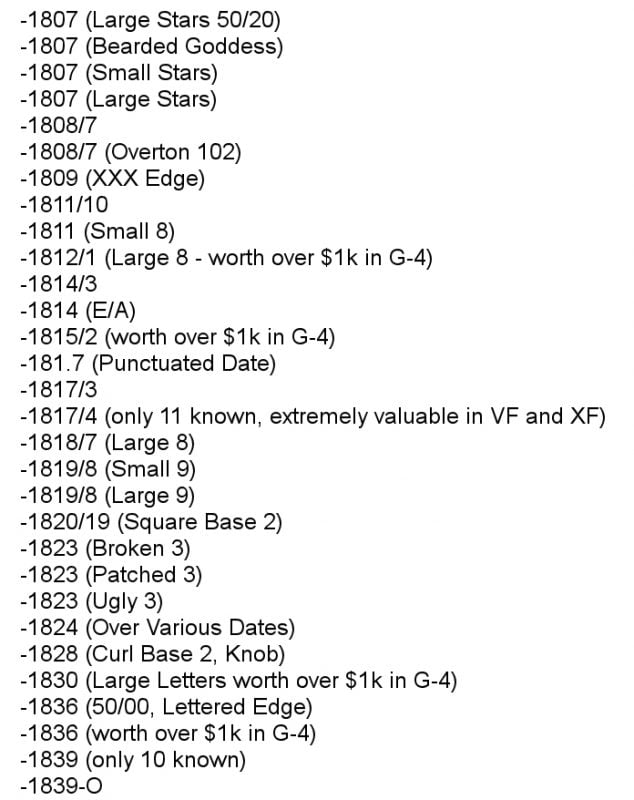
Morgan Silver Dollars
(1878-1904, 1921)

Pre-21 Morgan Silver dollars are 90% silver, and have a mint mark that is located on the reverse below the wreath above the letters “D-O” in the word “DOLLAR”.
Morgan Silver dollars were minted in five different mints including: Philadelphia, San Francisco, New Orleans, Carson City, and Denver, with Carson City Morgans being quite possibly the most desired and sought-after silver dollars of them all. The “CC” mint mark on the reverse above the wreath is something everyone likes to look for when holding a Morgan Silver Dollar in their hand. There are 14 different CC Morgans in total.
Key dates to look out for include: 1878-CC, 1879-CC, 1880-CC, 1881-CC, 1882-CC, 1883CC, 1884-CC, 1885-CC, 1888-CC, 1889-CC, 1890-CC, 1891-CC, 1892-CC, 1892-S, 1893, 1893-CC, 1893-O, 1893-S, 1894, 1895-O, 1895-S, 1899, 1902-S, 1903-O, and 1903-S.
Production originally ended for the Morgan in 1904, but was brought back for one year only in 1921 as a desire for the coin was renewed.
PEACE Silver Dollars
(1921-1935)
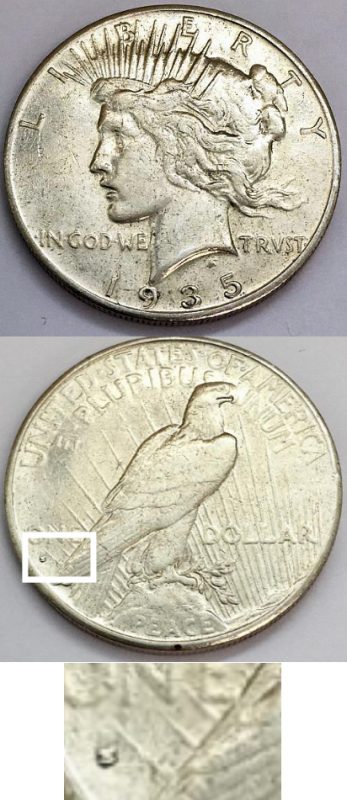
Peace Silver dollars are 90% silver. The “D” or “S” mint mark can be found on the reverse at the end of the feather tip, directly below the word “ONE”.
Key dates for the Peace Dollar include 1921, 1928, and 1934-S.
Thank you for reading this final installment of our multi-part U.S. coin blog series! Our next series will discuss proof & mint sets.
If you have any of these coins, and would like to get a free estimate, please call us at (845) 228-4653 .
